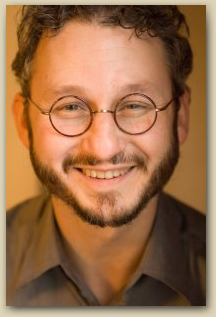Matthew 12:1-8 – Two Emphases; Two Chiasms; One Narrative
Don’t read this if you think chiasms are Perry’s imaginary friend. What they can do is lead us to see both surface truths and the deeper meanings; along with seeing things as we are meant to see (and maybe miss because of our Western eyes). I will present two chiasms on the same narrative. Sometimes people mock chiasms because not everyone is the same. I suggest for your consideration, sometimes they can at times be constructed differently to emphasize the obvious and the obtuse.
ASV PDH
A – JESUS ON THE SABBATH 1) At that time Jesus went on the sabbath day through the grainfields;
B – DISICIPLES CONDEMNED and his disciples were hungry and began to pluck ears and to eat. 2) But the Pharisees, when they saw it, said to him, “Behold, your disciples do that which it is not lawful to do on the sabbath.”
C – “HAVE YOU NOT READ” 3) But he said unto them, “Have you not read what David did, when he was hungry, and they that were with him; 4) how he entered into the house of God, and ate the showbread, which it was not lawful for him to eat, neither for them that were with him, but only for the priests?
C’ – “HAVE YOU NOT READ” 5) Or have you not read in the law, that on the sabbath day the priests in the temple profane the sabbath, and are guiltless? 6) But I say unto you, that one greater than the temple is here.
B’ – DICIPLES CONDEMNED 7) But if ye had known what this meant, “I desire mercy, and not sacrifice”, you would not have condemned the guiltless.
A’ – JESUS ON THE SABBATH 8) For the Son of man is lord of the sabbath.
OR, and this does not mean the above chiasm is incorrect; could there be another way of arranging the middle? Could there be an obvious and more subtle construct? This should not be disconcerting because scriptures often have a surface truth along with a deeper truth. They do not contradict but instead they showcase different points and harmonize. This concept actually plays well in the narrative of Matthew 12 because the Pharisees had only a surface understanding of the Sabbath and did not see a deeper meaning.
- The first construct emphasizes the disciples were lawful in their actions because Jesus refers to the authority of the Old Law which they should have known through the condemnation, “have you not read?” In this Jesus turns the condemnation around.
- The second construct emphasizes the priests. This would clear Abiathar of any suspicion of wrongdoing while leading up to the declaration, “one greater than the temple is here!” (12:6)
- What both illustrations have in common, and is emphasized through this second chiastic arrangement, is the temple.
C – HOUSE OF GOD 3) But he said unto them, “Have you not read what David did, when he was hungry, and they that were with him; 4) how he entered into the house of God,
D – THE PRIESTS and ate the showbread, which it was not lawful for him to eat, neither for them that were with him, but only for the priests?
D’ – THE PRIESTS 5) Or have you not read in the law, that on the sabbath day the priests in the temple profane the sabbath, and are guiltless?
- Implied is one way the priests violate the sabbath in the temple is by making the bread and replacing the old bread (which David and his men ate), with new bread.
C’ – TEMPLE 6) But I say unto you, that one greater than the temple is here.
The first construct refers the condemners to the Law they were misusing to condemn. The second construct refers them to the priesthood, a class of people set-aside by God and of which the Pharisees were not a part of. In these two chiastic structures we see:
- In the first, the Pharisees using the Law incorrectly to condemn, and Jesus using the Law to condemn the Pharisees. This leads to Jesus saying He is Lord of the Sabbath.
- In the second, the priests are not actually breaking the law because their work is exempt. This leads to Jesus implying He is greater than the temple and its work.



 Perrydox.com is devoted to the pursuit of truth, whether plain or paradoxical, whether simple or sublime, or simply absurd yet absolute.
Perrydox.com is devoted to the pursuit of truth, whether plain or paradoxical, whether simple or sublime, or simply absurd yet absolute.

Comments